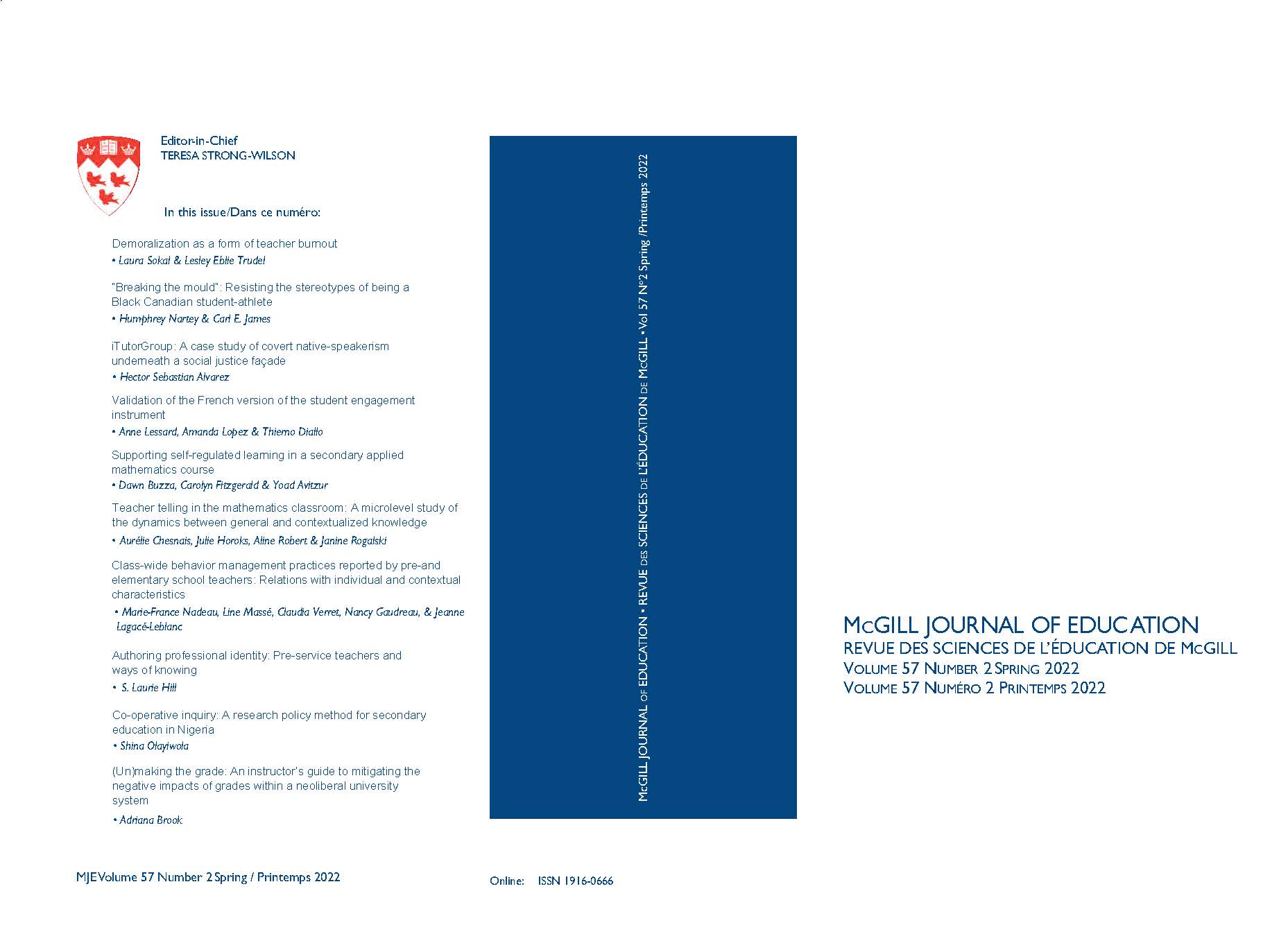Lessons from the junk drawer: Possibilities for sustainability in art education
Keywords:
art education, environmental education, new materialism, environmental crisis, material cultureAbstract
From planetary warming and natural disasters to pollution and community unrest, the sensorium of the climate crisis pervades our daily life. Art education has the potential to help us better understand the sensory reality of the climate crisis. However, the materials used in artistic creation are ecologically unsustainable and therefore may hinder learner’s connection to ecology. Through exploring the metaphor of the junk drawer, the author positions materials as potential teachers and, subsequently, as important parts of meaningful teaching and learning. The article explores the pedagogical impacts of different art materials while arguing that sustainable materials can lead to eco-consciousness for educators and students.
References
Barad, Karen. (2007). Meeting the Universe Halfway: Quantum Physics and the Entanglement of Matter and Meaning. Durham: Duke University Press.
Braidotti, R. (2019). Posthuman knowledge (Vol. 2). Cambridge: Polity Press
Davis, H. (2015). Life & death in the Anthropocene: A short history of plastic. Art in the anthropocene: Encounters among aesthetics, politics, environments and epistemologies, 347–358.
Finley, S. (2008). Arts-based research. Handbook of the arts in qualitative research, 71–81.
Gablik, S. (2002). Living the magical life: An oracular adventure. Grand Rapids, MI: Phanes Press.
Garber, E. (2019). Objects and new materialism: A journey across making and living with objects. Studies in Art Education, 60(1), 7–21.
Girak, S. s. girak@ecu. edu. a., Lummis, G. W. 1. g. lummis@ecu. edu. a., & Johnson, J. johnsonresearchperth@gmail. co. (2019). Creative reuse: The impact artmaking has onraising environmental consciousness. International Journal of Education through Art, 15(3), 369–385. https://doi-org.lib-ezproxy.concordia.ca/10.1386/eta_00009_1
Graham, M. A. (2007). Art, ecology and art education: Locating art education in a critical place-based pedagogy. Studies in Art Education, 48(4), 375–391.
Hicks, L. E., & King, R. J. H. (2007). Confronting Environmental Collapse: Visual Culture, Art Education, and Environmental Responsibility. Studies in Art Education, 48(4), 332–335. Retrieved from https://doi-org.lib-ezproxy.concordia.ca/10.1080/00393541.2007.11650111
Inwood, H. J. (2013). Cultivating Artistic Approaches to Environmental Learning: Exploring Eco-Art Education in Elementary Classrooms. International Electronic Journal of Environmental Education, 3(2), 129–145.
Kynigos, C., & Futschek, G. (2015). Re-Situating Constructionism. Constructivist Foundations, 10(3), 281–284. Retrieved from http://0- search.ebscohost.com.mercury.concordia.ca/login.aspx? direct=true&db=eue&AN=1 09067095&site=eds-live
Lande, M., & Jordan, S. (2014, October). Making it together, locally: A making community learning ecology in the Southwest USA. In 2014 IEEE Frontiers in Education Conference (FIE) Proceedings (pp. 1–7). IEEE. Øivind Fuglerud, and Leon Wainwright, Berghahn Books, Incorporated, 2015. ProQuest Ebook Central, http://ebookcentral.proquest.com/lib/mcgill/detail.action?docID=1707793.
Rosiek, J. L., Snyder, J., & Pratt, S. L. (2020). The New Materialisms and Indigenous Theories of Non-Human Agency: Making the Case for Respectful Anti-Colonial Engagement. Qualitative Inquiry, 26(3–4), 331–346. https://doi.org/10.1177/1077800419830135
Sang, A. N. H. (2010). Plastic bags and environmental pollution. Art Education, 63(6), 39–43.
Sensoy, Ö, & DiAngelo, R. J. (2017). Is everyone really equal?: An introduction to key concepts in social justice education. NY City, NY: Teachers College Press.
Solnit, R. (2014). Call climate change what it is: violence. The Guardian. http://www.theguardian.com/commentisfree/2014/apr/07/climate-change-violence-occupy-earth
Timm-Bottos, Anna (2017) Seeing the Potential: A Canadian Creative Reuse Centre Case-Study. Masters thesis, Concordia University
Williamson, J. (2013). Collective action: environmentalism in contemporary art. Art Monthly Australia, (264),
Wallace-Wells, D. (2020). The uninhabitable earth: Life after warming. New York: Tim Duggan Books.
Published
How to Cite
Issue
Section
License
Copyright (c) 2023 McGill Journal of Education / Revue des sciences de l'éducation de McGill

This work is licensed under a Creative Commons Attribution-NonCommercial-NoDerivatives 4.0 International License.



